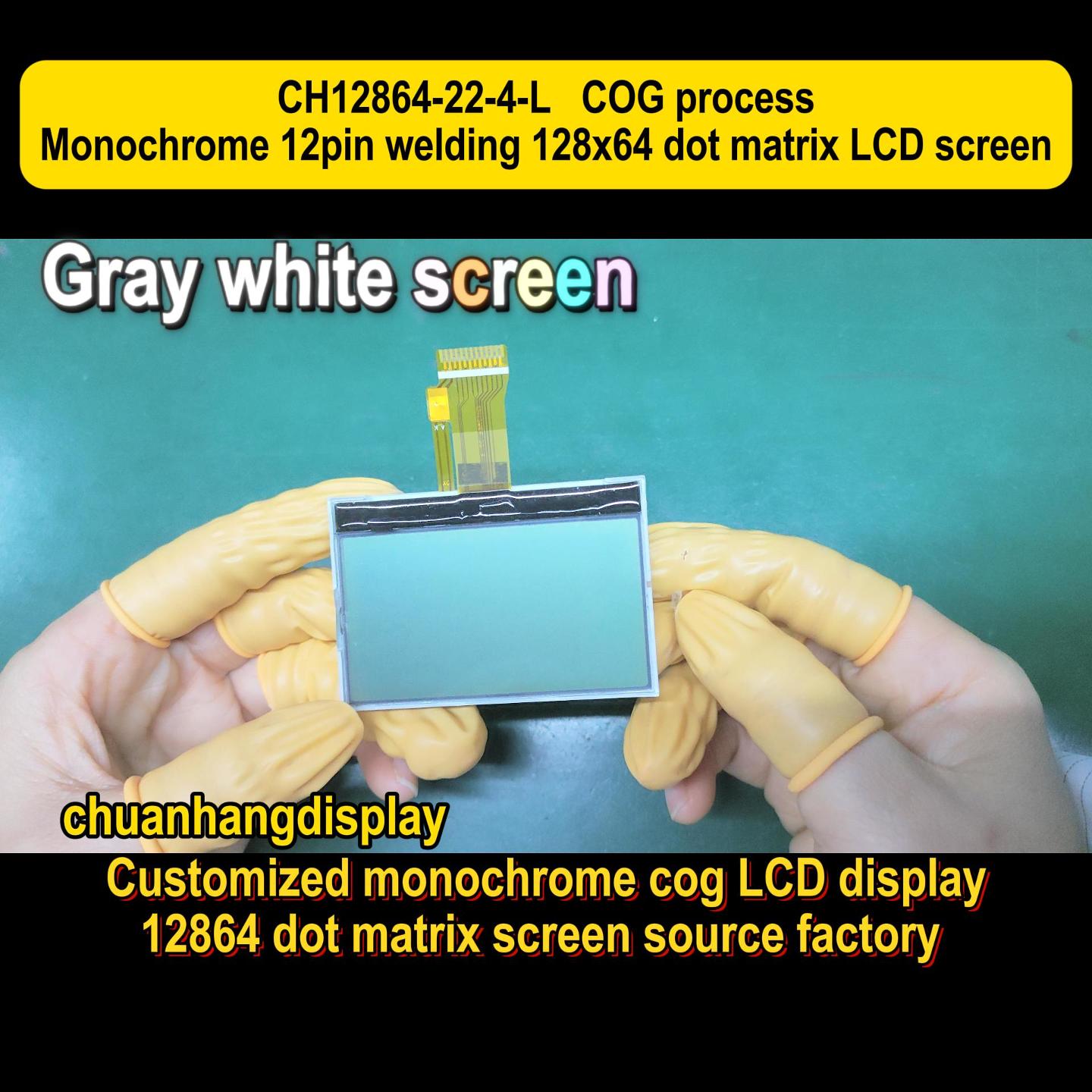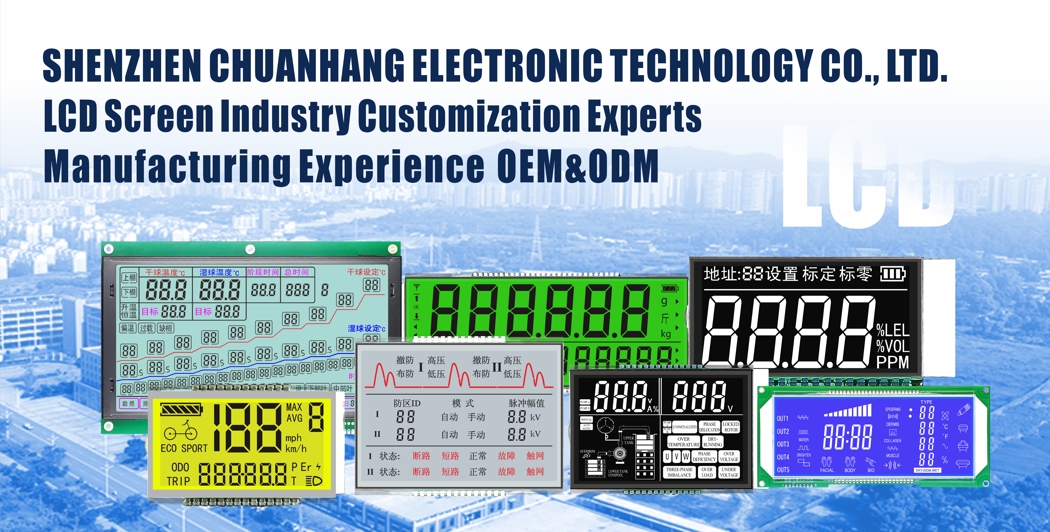In the world of electronic displays, the 7 Segment LCD remains a fundamental component that many of us encounter daily, often without even realizing it. From digital clocks and calculators to industrial instruments and medical devices, this simple yet efficient display technology has stood the test of time. But what exactly is a 7 Segment LCD, and why is it so widely adopted? This article delves into the essential aspects of 7 Segment LCD displays, exploring their functionality, applications, and relevance in today's tech-driven landscape. We will also highlight Chuanhang Display, a trusted brand in this field, to give you a comprehensive understanding. Whether you're an engineer, hobbyist, or simply curious, read on to uncover the intricacies of this versatile display type.

A 7 Segment LCD is a type of electronic display device that uses seven segments to represent numerical digits and sometimes basic letters or symbols. Each segment is a small liquid crystal display (LCD) element that can be individually controlled to form characters, typically from 0 to 9. The segments are arranged in a figure-eight pattern, allowing for clear and legible output in various conditions. This design is not only cost-effective but also energy-efficient, making it ideal for battery-powered devices. The 7 Segment LCD operates on the principles of liquid crystal technology, where an electric field manipulates the crystals to block or allow light, creating visible segments. Over the years, advancements have led to variations like 14-segment or 16-segment displays for alphanumeric use, but the classic 7 Segment LCD remains popular due to its simplicity and reliability. Brands like Chuanhang Display have refined this technology, offering high-contrast, low-power models that cater to diverse industries.
The operation of a 7 Segment LCD revolves around the manipulation of liquid crystals sandwiched between two polarized layers. When no voltage is applied, the crystals align to allow light to pass through, making the segment appear transparent. Applying a voltage causes the crystals to twist, blocking light and making the segment appear dark. This on-off state is controlled by a driver circuit, often integrated with microcontrollers, which sends signals to specific segments to form the desired character. Each of the seven segments is labeled from A to G, and by activating different combinations, numbers like 0-9 can be displayed. For instance, to show the digit "8," all segments (A through G) are energized. The 7 Segment LCD typically requires a backlight or reflective layer for visibility in low-light conditions, and its low power consumption—often in the microampere range—makes it suitable for portable devices. Innovations from companies like Chuanhang Display have enhanced response times and viewing angles, ensuring that these displays perform reliably in demanding environments.
7 Segment LCDs are ubiquitous in both consumer and industrial sectors due to their clarity and efficiency. In consumer electronics, you'll find them in digital watches, calculators, and household appliances like microwaves and ovens, where they show time, temperature, or settings. The automotive industry uses 7 Segment LCD displays in dashboard indicators, odometers, and radio interfaces, providing drivers with essential information at a glance. In healthcare, medical devices such as blood pressure monitors and glucose meters rely on these displays for accurate numerical readouts, thanks to their high reliability and low error rates. Industrial applications include control panels, instrumentation, and timers, where the 7 Segment LCD withstands harsh conditions like temperature variations and vibrations. Additionally, public information systems, such as scoreboards and ticket machines, utilize these displays for their durability and ease of reading from a distance. Chuanhang Display, for example, supplies 7 Segment LCD units that meet stringent industry standards, ensuring they perform consistently across these varied uses.
Like any technology, 7 Segment LCDs come with their own set of pros and cons. One major advantage is their low power consumption, which extends battery life in portable devices. They are also highly cost-effective to produce and maintain, making them accessible for mass-market products. The simplicity of the 7 Segment LCD design translates to easy integration and programming, reducing development time for engineers. Moreover, these displays offer excellent readability in various lighting conditions, especially when paired with backlights or reflective coatings. However, there are limitations: the 7 Segment LCD is restricted to displaying primarily numbers and a few letters, which can be a drawback for applications requiring full alphanumeric output. They may also have slower response times compared to LED alternatives, though brands like Chuanhang Display have mitigated this with faster liquid crystal formulations. Another downside is potential visibility issues in extreme temperatures, but overall, the benefits often outweigh the drawbacks for many use cases.

When evaluating display options, it's helpful to compare 7 Segment LCDs with alternatives like LED, OLED, and dot matrix displays. LED displays, for instance, are brighter and have faster response times, but they consume more power and can be costlier, making the 7 Segment LCD a better choice for energy-sensitive applications. OLED displays offer superior contrast and flexibility, yet they are prone to burn-in and have shorter lifespans, whereas a well-made 7 Segment LCD from a brand like Chuanhang Display can last for tens of thousands of hours. Dot matrix displays provide more versatility in showing graphics and text, but they are complex to program and often more expensive. The 7 Segment LCD excels in scenarios where simplicity, low cost, and reliability are paramount, such as in basic numeric readouts. By understanding these differences, users can select the right display for their needs, with the 7 Segment LCD remaining a top pick for straightforward, numeric-based interfaces.
Chuanhang Display has established itself as a leading manufacturer of high-quality 7 Segment LCD displays, known for their durability, precision, and innovation. With years of experience in the display industry, this brand offers a wide range of 7 Segment LCD products tailored to various sectors, including consumer electronics, automotive, and industrial controls. Their displays feature enhanced viewing angles, low power consumption, and robust construction that resists environmental stressors like moisture and dust. Chuanhang Display also provides customization options, allowing clients to specify sizes, colors, and backlighting to meet unique project requirements. By adhering to strict quality control standards, they ensure that each 7 Segment LCD unit delivers consistent performance, making them a trusted partner for businesses worldwide. Whether you're designing a new device or upgrading an existing system, considering Chuanhang Display for your 7 Segment LCD needs can lead to improved efficiency and user satisfaction.
In conclusion, the 7 Segment LCD is a timeless display technology that continues to play a vital role in modern electronics. Its simplicity, efficiency, and versatility make it an excellent choice for numerous applications, from everyday gadgets to critical industrial tools. By understanding its features, functions, and comparisons with other technologies, you can appreciate why the 7 Segment LCD remains relevant. Brands like Chuanhang Display further enhance this relevance through reliable and innovative products. As technology evolves, the 7 Segment LCD is likely to adapt, maintaining its place in the digital world.
Q1: What is the typical lifespan of a 7 Segment LCD?
A1: The lifespan of a 7 Segment LCD can vary based on usage and quality, but generally, it ranges from 50,000 to 100,000 hours. High-quality versions from brands like Chuanhang Display often exceed this, thanks to robust materials and advanced manufacturing processes.
Q2: How do I interface a 7 Segment LCD with a microcontroller?
A2: Interfacing a 7 Segment LCD with a microcontroller typically involves connecting the segments to GPIO pins and using a driver IC or library to control the display. Many microcontrollers, such as Arduino or PIC, have dedicated tutorials and code examples for this purpose, making it straightforward for hobbyists and engineers.
Q3: Can a 7 Segment LCD display letters or symbols?
A3: While a standard 7 Segment LCD is designed primarily for numbers (0-9), it can display a limited set of letters and symbols, such as A, B, C, or decimal points, by activating specific segment combinations. For full alphanumeric capability, consider a 14-segment or dot matrix display instead.
Q4: What are the power requirements for a 7 Segment LCD?
A4: A 7 Segment LCD is highly energy-efficient, often operating at voltages between 3V and 5V with current consumption in the microampere range. This low power demand makes it ideal for battery-operated devices, and brands like Chuanhang Display offer models optimized for even lower energy use.
Q5: How does temperature affect the performance of a 7 Segment LCD?
A5: Extreme temperatures can impact a 7 Segment LCD; very cold conditions may slow response times, while high heat might cause fading or damage. However, many industrial-grade displays, including those from Chuanhang Display, are designed to withstand a wide temperature range, often from -20°C to 70°C, ensuring reliable operation in diverse environments.